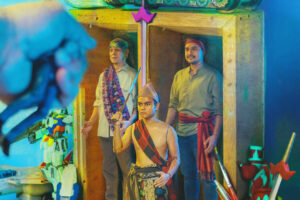Filipino values in personal finance

“Ma’am, I want to enroll my daughter, Jane, in ballet classes, and I have to buy her the leotards and tights for the twice a week classes in Megamall,” Agring said. My mother was aghast. Her jaw dropped and froze her face to a stunned grimace. Her housemaid of 10 years, Agring, then already retired and married, with three young girls, was like family and was always welcome to come and visit, but this urgent request for a special loan perplexed Mom.
Agring and her family were so poor that Mom had given them money to build a shack to live in one of her (Mom’s) vacant lots in Kamias. Mom would find odd jobs for the couple to do, and eventually placed the husband in a casual janitorial position in a relative’s company. Mom also gave Agring a small monthly stipend as bantay (watcher) over the property (to keep away squatters), but more as a help for the family’s food and utilities.
Whenever Agring would come to “visit” Mom, there would likely be a need for money or some “facilitation” for a “connection” with the person or entity that Mom knew, who made the decisions in a particular situation. Mom would always try to help, as she loved Agring like a daughter, and was godmother at her wedding. How confident Agring was with asking Mom for ready assistance! When Agring needed money, she would always say, “It is a loan, Ma’am, I will pay you back.” Of course, Agring never paid back any “loan” from Mom.
This time, Mom had to say, “No!” to Agring’s requested “loan” to enroll her daughter in expensive ballet classes and buy imported leotards and tights, tutus, and ballet shoes and pay for all the appurtenances of the training. The daughter was not a child prodigy who needed a break to crash into the limelight — she did not even show much interest in ballet, only, her mother was ambitious for her to learn how to dance ballet, like the children of middle-class parents. “Help us out of our constraints,” she begged my Mom. Still, Mom said, “No. Better for you to live within your constraints, while you work hard to lift yourself up — not by the instant help of benefactors but in the slower, character-building struggles of achieving sustainable goals.”
Although the story is almost 20 years old (Mom and Agring have passed on since), the children of Agring and their families have lived on in our Kamias property, with the same benefactor-protector role I inherited from my mother towards the family of Agring. It is not a role that is unwanted, despite the disparity between my late Mom’s resources and mine to help the poor family whom we loved and still love. But the scenarios of relationships in Filipino culture and values are shown by this example, of how survival and well-being in our country is more dependent on connections and influence based on entitlements from family and friends. Personal finance, especially loans, are facilitated by the social values of relatedness and dependence.
Data from the Bangko Sentral ng Pilipinas (BSP) show that as of 2015, around 47% (or nearly half) of all Filipino adults had an outstanding loan. Much of these borrowings are not from formal sources like banks or cooperatives, but a stunning 62% borrowed from family members, relatives, and friends, while 10% borrowed from informal lenders like loan sharks and “5-6” lenders (2015 National Baseline Survey on Financial Inclusion: BSP cited in rappler.com, Jan. 14, 2017).
Micro, small and medium enterprises, MSMEs, which comprise around 99.6% or nearly all business establishments in the Philippines, act like the individual borrowers who rely on the informal lenders because of the same reasons such as accessibility of credit most often without collateral and audit/accounting recording and registering.
It might also be cynically thought that such loose arrangements of lending and borrowing would give much room for flexibility of payment terms and conditions — but informal lenders will always find a way to collect in the end, while often-onerous compounded interest rates apply, like the 20% interest rate in “5-6” loans. Family lenders might have less suasion to collect on bad loans because of the Filipino values of lunos at pakikiramay (mercy and compassion) and pakikisama (group identity, “we are one,” like atin ito, meaning “this is our man” or “we belong”). Good-bye then, to money lent to family and friends.
The government has been trying to wean borrowers from informal lenders, with the objective of disciplining and regulating lending and borrowing activities — towards financial inclusion of the underprivileged sectors in economic development. In 2007, Congress passed the “Magna Carta for MSMEs” which required banks to allocate at least 8% of their loan portfolio to micro and small enterprises, and 2% to medium enterprises. Community-based microfinance institutions (MFIs), patterned after the Nobel Prize-winning Grameen Bank, have been established, making use of existing community relations, and lending with minimal requirements. Collection is helped by the peer-group pressure in the close community, with the overshadowing Filipino values of hiya (shame) and palabra de honor (word of honor); and the discipline of paninindigan (integrity and responsibility).
Yes, more than the kindly inclusion of the “un-banked” borrowers in the financial mechanisms of development, the negative social values of overdependence on family and “connections” must be countered by inculcating the disciplines of integrity and responsibility, honesty and prudence in financial transactions, as in all transactions.
The National Economic and Development Authority (NEDA) has espoused a “Financial Literacy” program where the financially literate Filipino plans, saves, invests, and accumulates more wealth; has less credit card debt; manages loans better, refinances mortgages, avoids high-cost borrowing methods (nro13.neda.gov.ph, May 11, 2019). The Department of Education (DepEd), through the Bureau of Curriculum Development (BCD), has expanded and intensified the integration of financial education in the K-to-12 Basic Education Curriculum “to improve the financial literacy and capability of its learners, teachers, and personnel which will enable them to acquire financial health and financial inclusion (deped.gov.ph, July 8, 2021).
But the COVID-19 pandemic wrought extensive damage to the financial health of the country before inclusion and literacy issues could slowly be eased. Nonperforming loans (NPLs) held by Philippine banks surged by 83% to P479.481 billion in May 2021 from P262 billion a year earlier. Bad loans also increased by 3.4% from the P463.659 billion in April (bworldonline.com, July 9, 2021). Are the banks more confidently lending again now?
Today the national debt has increased by another $2 billion borrowed by President Ferdinand “Bongbong” Marcos, Jr. from foreign lenders, on top of the P13.02-trillion debt the government has incurred as of end-August (ph.news.yahoo.com, Oct. 7). Filipinos now have a debt of over P127,000 each, which will be paid in the form of taxes, as the country’s debt grows (Ibid.).
“Oh, leave us alone to our devices, in the challenges to survival,” the Filipino might say. “Buti na lang, nandiyan ang kamag-anak at kaibigan.”
Thank God for family and friends.
Amelia H. C. Ylagan is a doctor of Business Administration from the University of the Philippines.




